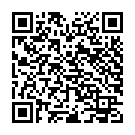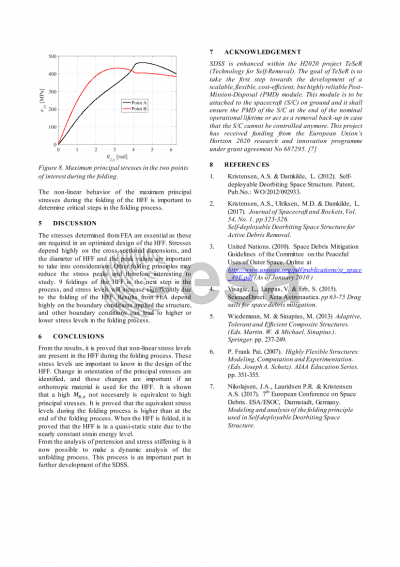Document details

Abstract
The objective of this research is to analyze the behavior of materials and components stowed in a spacecraft, deployed and in hibernation mode for minimum 25 years of flight. This research is related to the design of the semi-controlled debris removal system called the Self-deployable Deorbiting Space Structure (SDSS). Due to UN guidelines space crafts should deorbit within a span of 25 years from end of the operation. It is investigated how this affect the material properties and how this affect the mechanical behavior of the SDSS module. Since a spacecraft operates under extreme conditions during a mission, i.e. vacuum, thermal gradients, radiation, particle collisions, magnetic fields and corrosion, as well during launch, i.e. vibrations and accelerations, material selection is non-trivial. In the SDSS module the deployment robustness is depending on the spring force or pretension stored in the folded elastic frame suspending the drag sail. Analysis of the prestress is essential to ensure deployment of the SDSS module. The elastic frame is made of austenitic stainless steel due to the extreme conditions and to reduce the risk of radio frequency interference. Non-linear geometric FEA of the elastic frame will be conducted on the folding process and the stowed state. Results from these FEA will show the stress state in the elastic frame.
Only linear elastic behavior of the austenitic stainless steel is allowed to ensure correct operation of the SDSS.
This research is presented as a part of the research project TeSeR. AAU is responsible for Work package 4 where Airbus Defence and Space is the coordinator (and potential launch customer) of TeSeR. The project is conducted together with 10 notable institutes and companies from all across Europe with experts who have been working in the space debris issue for many years.
The TeSeR project contributes to solutions that will help solve the space debris issue to ensure a sustainable space environment for future generations. It is funded by the European Commission in the H2020 framework with almost EUR 3 million (grant agreement number 687295). It started in February 2016 and runs until January 2019.
Preview





